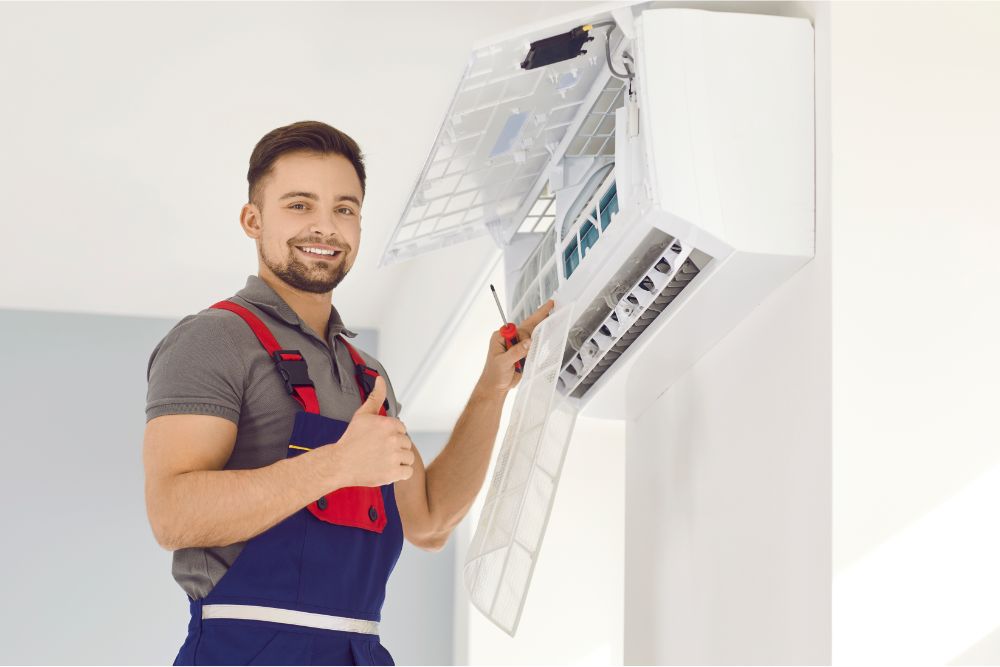-
How to Use Air Conditioning Rationally

For at least half a year every year, AC use accounts for at least 10% (or a slightly higher figure of 12% according to some estimates) of the total consumption of electricity in the US. Even if that doesn’t sound like too much, it actually is a lot of electricity. No other country in the world comes even close.
Americans are used to the convenience of AC, but in some parts of the country, air conditioning is a necessity rather than a source of comfort. When temperatures are consistently over 100 degrees in the summer, it is not just hot but downright dangerous.
However, there is still room for improvement in our use of AC. We talked to HVAC experts at Action AC who shared interesting guidelines to a more economical use of AC, both to save the environment (much of the electricity is still produced by burning fossil fuels) and to save you some money.
Install a Smart Thermostat
One could easily say we are living at the brink of the golden age of technology. More and more devices can be controlled and monitored remotely. One of the most common such devices is a smart thermostat.
With a regular thermostat, in order to manage the temperature, somebody must physically press the buttons on the device. That means that you have two options if you’re away from your home. You can either come back to an unpleasantly warm house or you can run the AC all day, even if nobody is home. Guess which option most Americans choose?
On the other hand, a smart thermostat will continually monitor your home’s temperature and you can manage it remotely. That gives you the ability to turn on the AC on your way home so you’ll come home to a nicely cooled home without wasting electricity and running your AC for long hours, shortening its lifespan.
Create a So-Called ‘Green Shield’
You probably know that having a tree or other forms of vegetation helps cool down your front yard. However, most people don’t know just how much this helps. In fact, a tree can make such a drastic difference that most people think the studies are wrong. On average, a tree can lower the temperature by around 20 degrees, and in the peak of the heat on a summer day, the difference can go as high as 45 degrees.
Even though trees are the MVPs of natural cooling, all vegetation helps, which you should be aware of if you ever walked on your sidewalk in summer and then stepped onto your grass. Thanks to the natural evaporation, the temperature is lower by roughly 10 degrees than on concrete.
Additionally, plants generally absorb greenhouse gases, making them even better for the environment. Just make sure that people in your household are not allergic, and you can create a natural barrier between excessive heat and your home.
Window Shades and Foil help Too
We often just want to crank the AC and not think about the consequences, and that is the simplest solution. Sadly, it is not a sustainable one. If we don’t want to completely wreck our environment, we will have to apply a multi-faceted approach to many issues, and cooling is one of them.
For instance, we can think back to how people lived without AC all their lives. During the hottest part of the day, they would just close the shades and prevent the sun from blasting through the glass and heating the house quite so drastically.
If old-timey solutions are not for you, you might be happy to learn that there are some modern approaches to passive cooling, such as UV foils for your windows. Essentially, this transparent foil is applied to your window and it will block the UV light from entering your home, reducing the temperature. You won’t block the natural light, but will also save on the electricity bill.
Ensure Your AC Is Fully Maintained
Finally, your AC is expected to run for years and provide cooling to your home. However, in order to do that, it does need your help. You should make sure that you change the filters regularly and have the AC inspected and maintained at least once a year.
AC technicians will be able to see a potential problem before it develops, becomes more severe and causes a malfunction.





